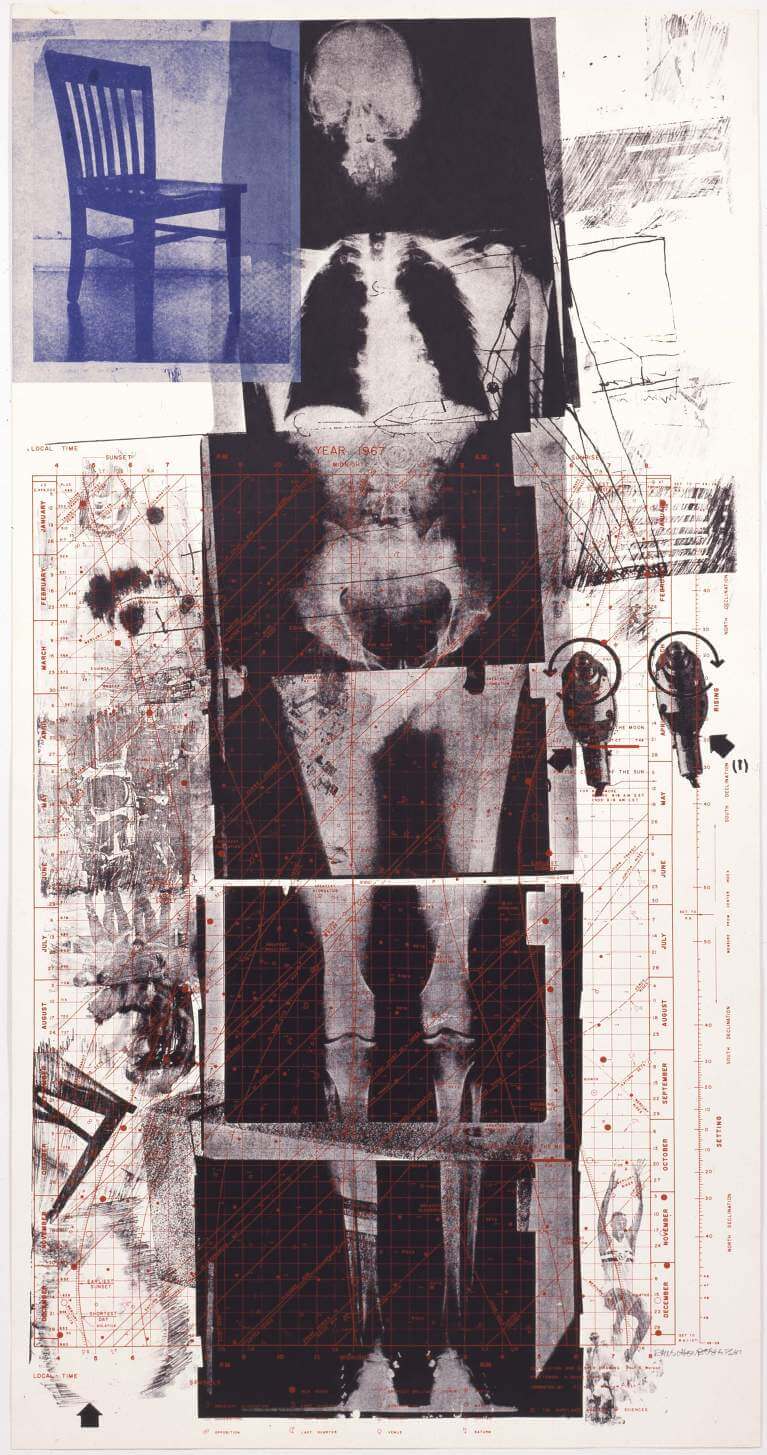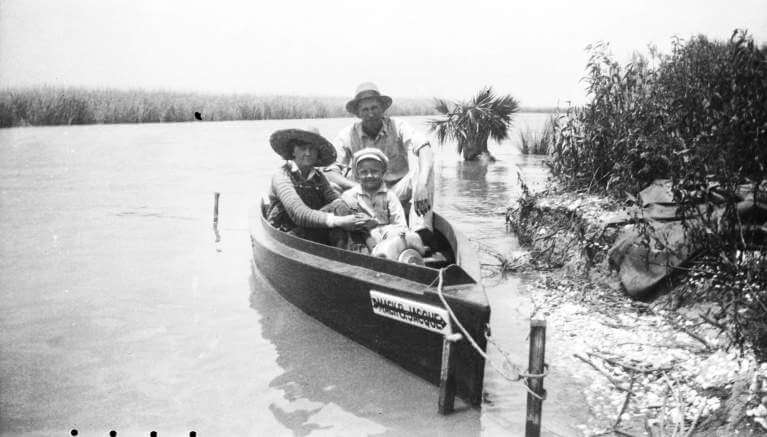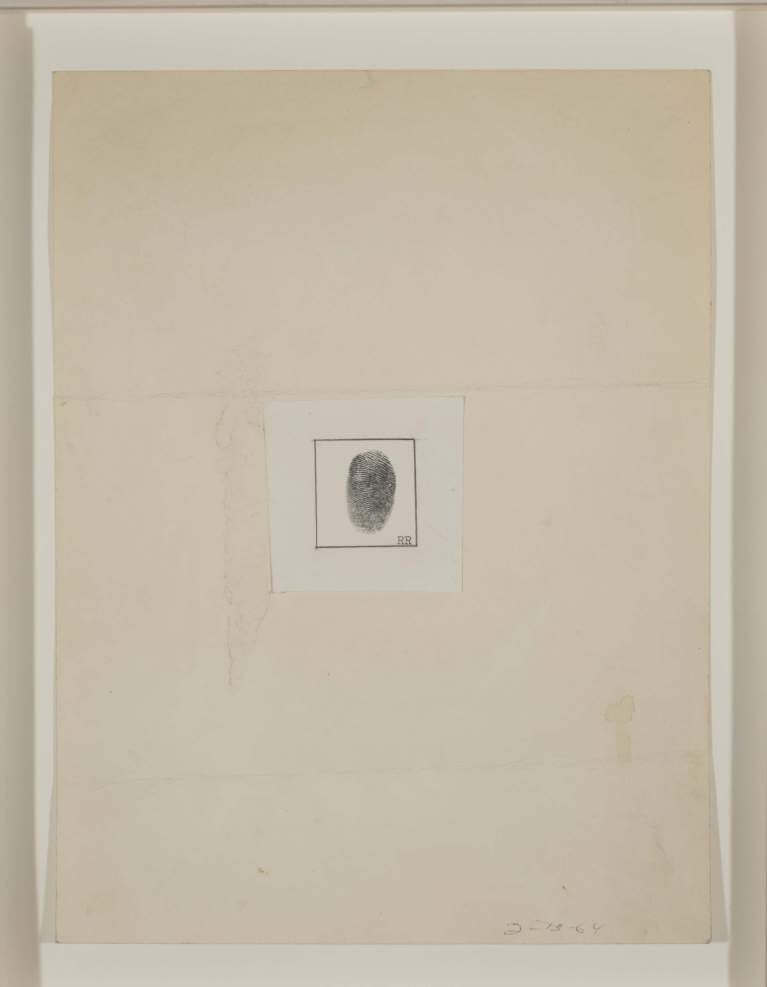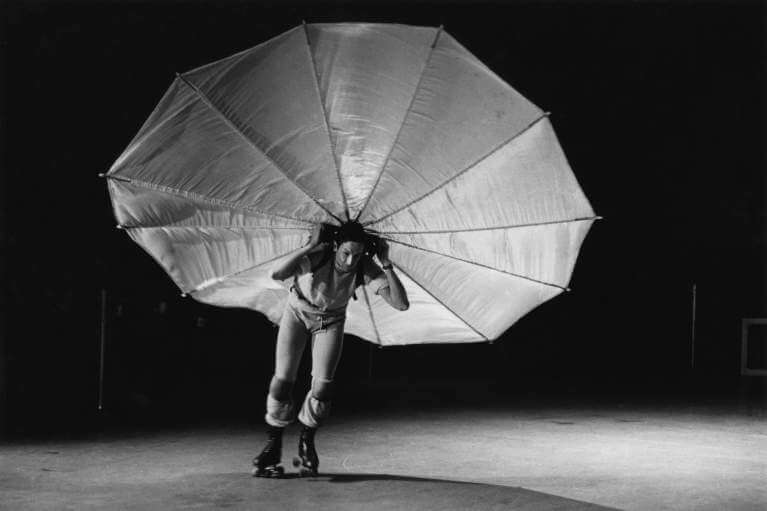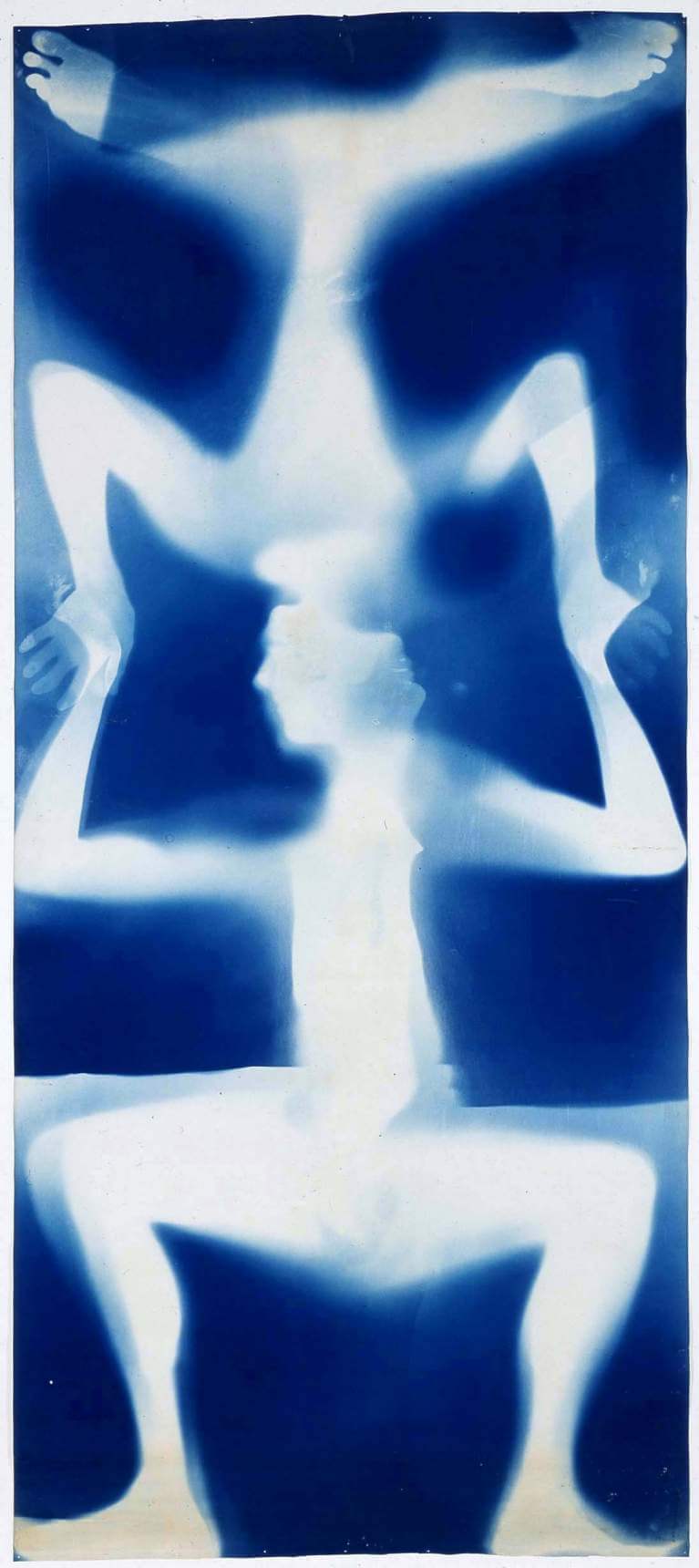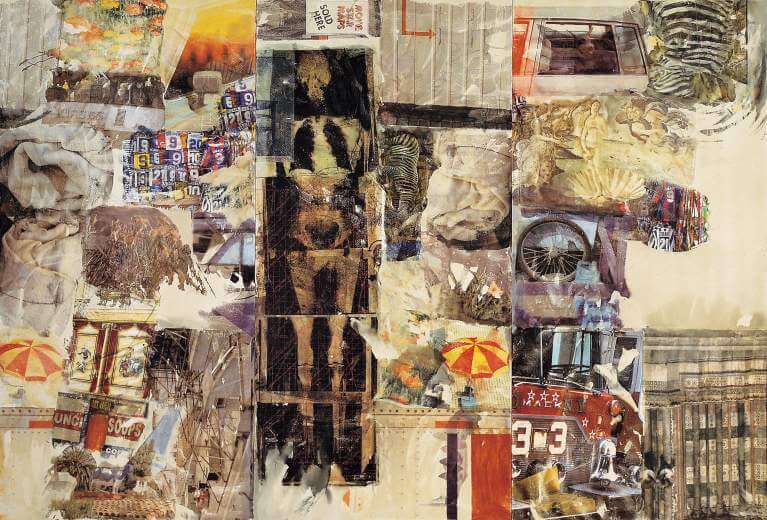
Autobiography, 1968
Autobiography
Rauschenberg’s monumental print Autobiography (1968) is a summation work that brings together the life and work of the then forty-three-year-old artist. Printed on three sheets of paper in an edition of 2,000, under the sponsorship of Marion Javits, wife of the U.S. Senator Jacob Javits, Autobiography is the first fine art print made on a billboard press. In each section, the artist’s personal history is woven together through a montage of indexical images—direct traces of the artist—such as photographs and X-rays, combined with references to places of personal importance and “found” imagery, including an umbrella and wheel, which are among Rauschenberg’s recurrent motifs. Upon its completion in January 1968, the sixteen-and-a-half-foot-tall, color, offset lithograph was immediately exhibited at the Whitney Museum of American Art, New York.
Click here to view a transcription of the text printed on the center panel of Autobiography.

